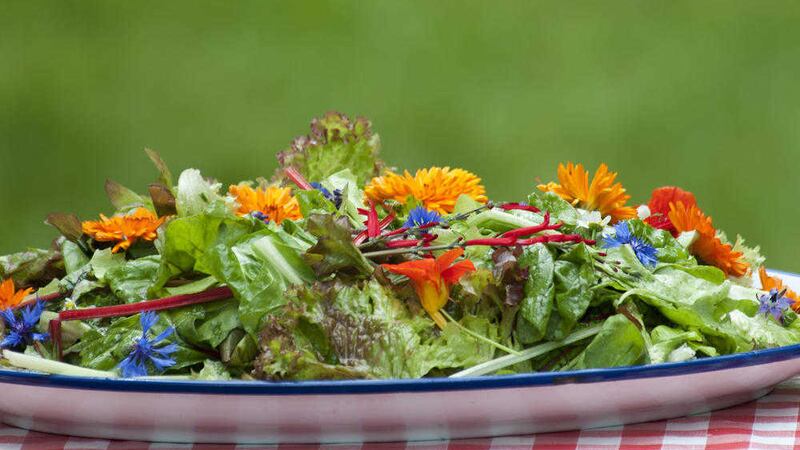LAST week I was privileged to spend a morning with Scottish chef Chris Charalambous foraging for lunch in Glasgow's Botanic Gardens.
It was a real eye-opener to be introduced to a range of plants whose culinary properties I'd previously overlooked.
Among the more surprising revelations were hogweed, ground elder and even the cursed Japanese knotweed. The foraging, along with the meal that followed at Cail Bruich, was an unforgettable experience and there’ll be more about it in these pages in the coming weeks.
For the meantime though, it has prompted me to explore the edible possibilities in my own garden beyond the vegetable patch.
In the past, the only flower I've ever deliberately served up on a plate was a nasturtium – in a salad. Both the flowers and the seeds of this common perennial are edible – the petals add lots of colour and a little flavour to salads, while the seeds make a great substitute for capers.
But there are many more plants deemed ‘ornamentals’ that can be incorporated into a meal, whether it's to add colour, flavour and texture to savoury and sweet dishes.
There's also a range of wild flowers and cultivars than can be transformed into cordials, oils and butters.
The first thing to bear in mind when consuming flowers is accurate identification, to ensure you don’t poison yourself or your dinner guests.
There is a helpful rule of thumb that could save you from a nasty belly ache – or worse: if in doubt, don’t eat it.
As well as being wary of soiling by dogs and other pets, you should consider the potential ill-effects of pesticides.
Ideally, you should only consume organically grown plants or at the very least those which have been purged of chemicals. Only eat edible flowers from the garden centre if labelled for ‘culinary purposes’, as these will have acceptable – if there is such as thing – pesticide residues.
It’s also advisable to let flowering plants grow on for at least three months to reduce the threat from pesticides, with only subsequent blooms harvested.
People with asthma, allergies, or hay fever are best to avoid eating any flowers.
So what floral feasts can be savoured?
For those with a sweet tooth, hollyhocks and primroses make nice crystallised additions to buns and cakes, while lavender and rose will flavour ice cream and biscuits.
For stir fries, try adding sunflowers or the buds and flowers of day lilies, and to flavour fish use chrysanthemum or tiger lily.
The bane of the pristine lawn lover – dandelions and daisies – are both edible, with the former’s roots occasionally roasted and used as a coffee substitute.
Elderflowers are extremely versatile and can be used to make cordial, wine or even champagne that you can quaff or use to flavour tarts and jellies.
They are also good served up ‘Scottish style’, whereby they’re dipped in batter and deep fried.
Why not wash it all down with Pimms garnished with borage or a frozen hibiscus margarita? Alternatively go for the healthy dessert option of flowers from the tree peony, Japanese honeysuckle or China rose, which have been shown to have various health benefits.
When collecting flowers to eat from the above list, pick the youngest, ideally on a dry early morning when the flavours are at their most intense, and then use immediately.
With the majority of flowers only the petals are palatable, so you can discard stamens, pistil and calyx of larger flowers, as well as the heel at the base of the petal.









